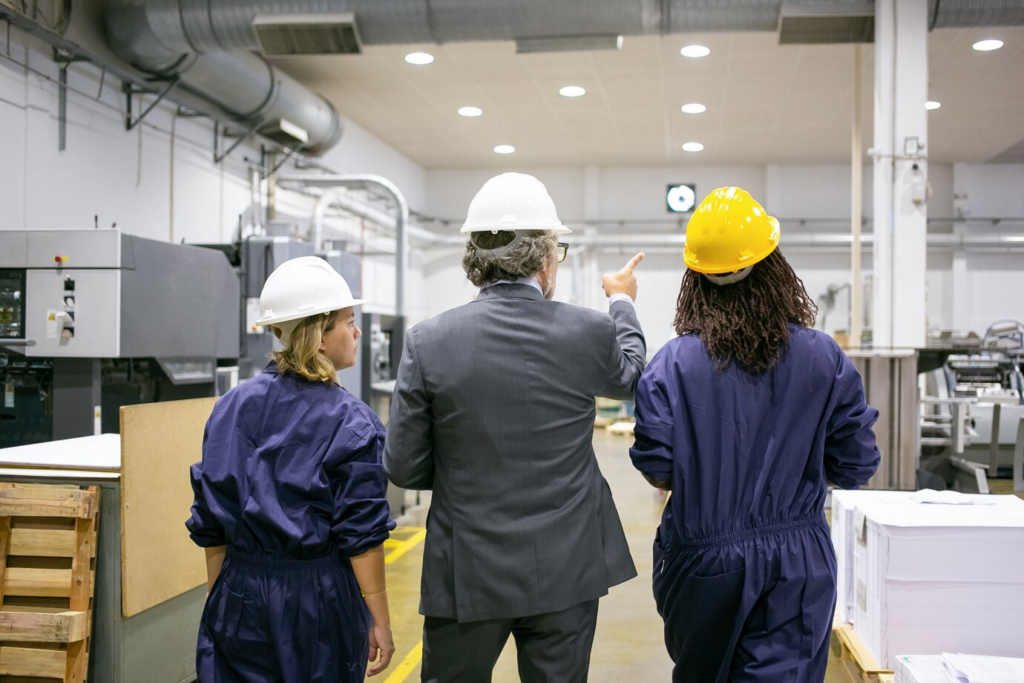In today’s fast-paced production environments, adopting proactive safety measures for productivity has a profound impact not only in preventing workplace incidents and injuries but also in cultivating a robust safety culture. This proactive stance lays the foundation for increased productivity by ensuring that safety is integrated into every aspect of operations. Businesses that prioritize safety proactively protect their employees rei,nforce trust, and boost morale, leading to improved overall performance.
As companies face increasing competition and stringent deadlines, it’s crucial to create not just a safe work environment but also to assure workers that their safety is a top priority. This commitment to safety enhances employee confidence and morale, which is essential for maintaining high productivity levels. This article explores how proactive safety measures play a pivotal role in shaping a positive work environment and driving organizational success.
Going Beyond Minimum Safety Requirements
Proactive safety practices transcend the basic legal and regulatory safety requirements. They involve the continuous evaluation and enhancement of safety standards and actively engaging every employee in safety initiatives. Employers have both moral and legal responsibilities to identify potential hazards and mitigate risks. By taking a proactive approach, they foster a positive safety culture that drives productivity and business growth.
A proactive safety culture is characterized by regular risk assessments, continuous improvement of safety protocols, and active employee involvement. This culture ensures that safety considerations are integral to daily operations rather than being treated as a separate or secondary concern. By embedding safety into the organizational fabric, businesses create a more resilient and productive workforce.
The Financial Impact of Workplace Incidents
Workplace accidents, injuries, and illnesses have significant financial implications for businesses. While direct costs like medical expenses and compensation are immediately apparent, the indirect costs can be far-reaching. Downtime, diminished employee morale, increased insurance premiums, a damaged corporate reputation, and potential legal actions all contribute to the hidden costs of workplace incidents.

By proactively addressing safety, businesses can mitigate these costs and avoid disruptions that affect productivity. A safe work environment reduces the likelihood of incidents, thereby minimizing financial losses and ensuring that resources are focused on productive activities rather than managing the aftermath of accidents.
Integrating Safety into Every Process
One of the core principles of a proactive safety approach is integrating safety measures into every stage of the workflow, starting from the planning phase. This ensures that safety risk management is an intrinsic part of the process rather than an afterthought. By incorporating safety considerations from the outset, businesses can design workflows that minimize risks and enhance overall efficiency.
For example, during the design and planning stages of a project, safety features can be built into the workflow, such as ergonomic workstations and safe equipment handling procedures. This integration helps in preemptively addressing potential hazards and ensures a smoother, more efficient operation.
Embedding Safety Training into Organizational Norms
Regular safety training is essential for maintaining a proactive safety culture. Workplaces should offer ongoing safety courses that cover both theoretical and practical aspects of safety, including the use of safety equipment, handling procedures, and response mechanisms. This training encourages a culture of continuous learning and improvement, fostering an environment where safety is a shared responsibility.
By involving employees in safety discussions and decision-making, organizations harness their collective knowledge and experience. This collaborative approach enhances safety and contributes to a more engaged and productive workforce.
Leveraging Technology for Safety Advancement
Advancements in technology greatly support the implementation of proactive safety measures. Modern technologies, such as wearable devices that monitor worker fatigue and working conditions, represent a significant leap in proactive safety management. These technologies provide real-time data that can help prevent accidents and improve safety protocols.

An informed and safety-conscious workforce, equipped with the latest best practices and technologies, is a valuable asset to any organization. By investing in both technology and training, companies create a work environment where safety and productivity are prioritized together, leading to enhanced overall performance.
Recognizing the Symbiosis Between Safety and Productivity
A comprehensive understanding and implementation of proactive safety measures highlight the recognition within the corporate world of the symbiotic relationship between safety and productivity. Organizations that effectively integrate safety into their operations see not only a reduction in incidents but also an increase in productivity.
By aligning safety standards with productivity goals, businesses create a more efficient and safe workplace. This alignment leads to cost savings, operational efficiency, and a loyal, engaged workforce, all of which contribute to long-term success.
Final Thoughts
For organizations to thrive, aligning safety standards with productivity goals is essential. A proactive safety management system, supported by advanced technology, ongoing learning, and a strong safety culture, leads to a more productive and efficient workplace. By prioritizing safety, businesses can achieve cost savings, enhance operational efficiency, and foster a committed and engaged workforce, ultimately driving organizational success.

